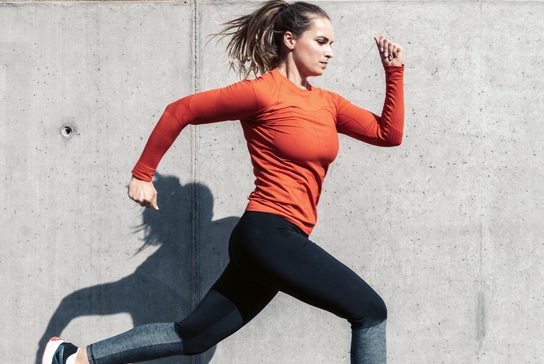V̇O2max and Aerobic Fitness
What is aerobic fitness?
Aerobic fitness, also known as cardiovascular endurance, refers to the body's ability to deliver oxygen to muscles, enabling them to perform work or engage in activity. This process involves several physiological systems: the lungs take in oxygen from the air we breathe, which is then perfused into the bloodstream. The heart and blood vessels transport the oxygen-rich blood to the working muscles, which utilize the oxygen to perform muscular contractions and produce work. A V̇O2max test is an invaluable tool to measure the efficiency and effectiveness of these physiological functions.


Understanding V̇O2max and Its Measurement
While there are numerous methods for evaluating aerobic capacity, treadmill walking or running is often suitable for most individuals. Normative data correlates time on the treadmill with aerobic fitness. VO2max, the maximum rate of oxygen consumption measured during incremental exercise, is the gold standard measure of aerobic fitness. It is expressed in milliliters of oxygen consumed per minute per kilogram of body weight (ml/kg/min). Various factors can influence VO2max, including heredity, training, age, gender, and body composition. Generally, VO2max declines with age (about 2% per year after age 30), and males typically have higher VO2max values than females. A higher VO2max allows one to produce more energy, thereby performing more work.
The Testing Process
Aerobic fitness is assessed by having the subject perform exercise at increased loads for 12 to 15 minutes while breathing into a mouthpiece that collects information on inspired and expired air. A treadmill (running or walking on an incline), personal bike on a stationary trainer, or a stationary bicycle are typically used. The test begins with an easy-to-moderate workload, maintained for 1-2 minutes. The load is gradually increased every 1-2 minutes until the subject reaches their maximum tolerable level and/or until physiological parameters such as heart rate and oxygen consumption hit a peak or plateau. This is achieved by increasing the cycling resistance or the speed and/or grade of the treadmill. The oxygen uptake, heart rate, speed, and/or watts are measured at the ventilatory threshold and at maximal load, the latter representing the subject's VO2max.
Application and Benefits of V̇O2max Testing
VO2max values provide valuable information for training and performance monitoring. While VO2max itself may not be used in everyday training, follow-up tests can measure progress. Through identification of first and second ventilatory thresholds (VT1 and VT2), heart rate, speed, and/or power levels measured during a VO2max test can be used to establish appropriate training zones. Other information, such as VO2 economy (oxygen consumption values at a given heart rate or power output), can also be extracted and compared to subsequent tests and performance norms.
Training increases the efficiency of oxygen transport within the body. By lowering the resting heart rate (HR) and HR at submaximal loads, the heart pumps more blood with each beat. This, along with other physiological changes, enhances the body's oxygen extraction capability. When an individual is tested before and after training at the same load, a lower HR is shown post-training due to more efficient oxygen delivery per heartbeat. Such HR differences during exercise can predict aerobic fitness. The percentage increase in VO2max varies significantly among individuals, ranging from 5-30%, with the least fit individuals typically seeing the largest improvements.
Health and Performance Implications
Research and public health data consistently indicate that low aerobic fitness levels are associated with an increased risk of premature death, particularly from cardiovascular disease. Conversely, higher aerobic fitness levels confer numerous health benefits, including longer lifespan, better quality of life, reduced risks for stroke, heart disease, diabetes, and cancer, improved mood and self-esteem, and better sleep patterns. To improve or maintain cardiovascular health, individuals should engage in cardiovascular exercise (running, walking, swimming, biking, etc.) at least three times per week. However, current public health data shows that only 22-25% of Americans exercise regularly enough to achieve these positive health benefits.
VO2max is also a predictor of athletic performance, although its correlation to success in endurance sports is about 30-40%, with other factors such as sustainable lactate threshold, motivation, and training also playing significant roles. Generally, a higher VO2max indicates greater potential for successful performance in aerobic endurance events.
